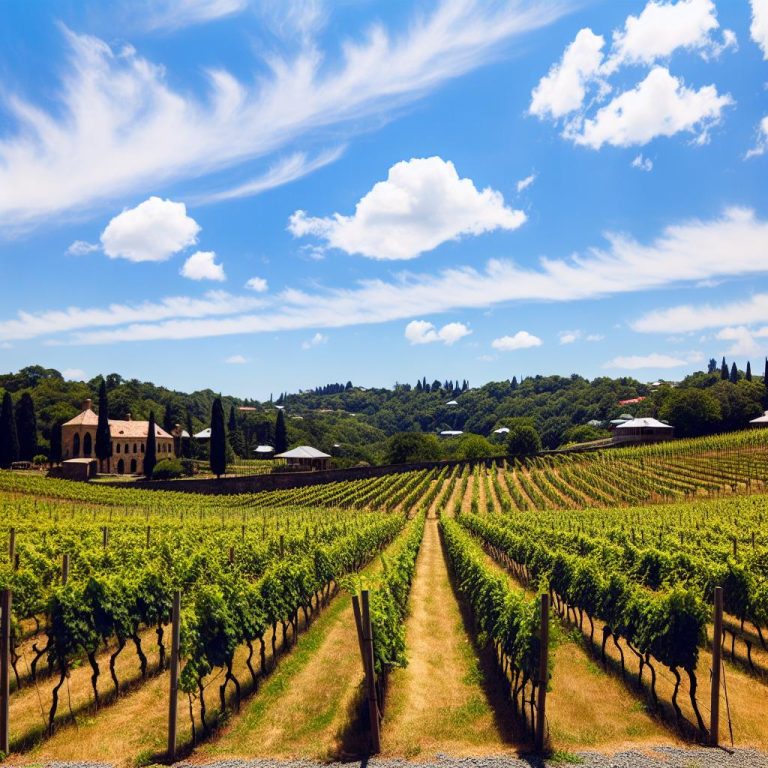The Emergence of Georgian Natural Wines
The global interest in natural wines has seen a significant uptick in recent years, with Georgian natural wines emerging at the forefront of this trend. Known for their unique flavors and traditional production methods, these wines have captivated the curiosity of wine enthusiasts and connoisseurs around the world. In particular, the rustic charm of Georgian wine has found a surprising niche market in places like Corn Island, Nicaragua.
Understanding Natural Wines
Natural wines are produced with minimal intervention during both the vineyard and winemaking processes. This means that grapes are grown using organic or biodynamic farming practices, avoiding synthetic chemicals. During fermentation, natural wines undergo spontaneous fermentation utilizing indigenous yeasts. Additionally, the use of additives, often present in conventional wines, is significantly limited or entirely omitted.
The Historical Context of Natural Wines
Natural wines have their roots deeply embedded in historical winemaking traditions, rather than being a modern innovation. Many of the practices that define natural wine production harken back to methods of ancient wine cultures, such as the avoidance of pesticides and the use of native yeast strains. This revival of antique techniques aligns with a growing public interest in sustainability and healthier food and beverage choices.
Furthermore, as the wine industry becomes more scrutinized for its environmental impact, both producers and consumers are drawn to the natural wine ethos. This approach promotes healthier vineyards, rich biodiversity, and a cleaner product. These practices make natural wine a responsible choice that fits within the broader push towards eco-friendly agricultural practices.
Georgian Wine-Making Tradition
Georgia, located at the crossroads of Europe and Asia, is often credited as the cradle of wine, with a winemaking history that spans over 8,000 years. The traditional Georgian method of making wine in qvevri—large clay vessels buried underground—remains prevalent today. This technique offers a distinctive fermentation and aging process that contributes to the unique characteristics of Georgian wines. For more on Georgia’s winemaking tradition, visit the official page on Georgian Wine.
The qvevri method epitomizes the natural approach by facilitating fermentation in a subterranean environment where temperatures are naturally regulated. This technique is crucial for producing wines that are not only flavorful but are also expressive of the terroir, and have minimal human intervention. By fermenting the wine with grape skins and seeds, Georgian winemakers further enhance the complexity and depth of flavors.
The Characteristics of Georgian Natural Wine
The end product of these traditional processes are wines exhibiting distinctive characteristics. Typically, Georgian natural wines present a remarkable array of textures and flavors, ranging from earthy and robust to fruit-forward and fresh. The transparency with which these wines convey their origin is unparalleled. Every bottle tells the story not only of the grape variety but also of the specific ground where the vines are cultivated.
Georgia is also home to a myriad of indigenous grape varieties that contribute to its diverse wine landscape. Names like Rkatsiteli, Saperavi, and Chinuri are just a few examples of grapes that find their place in more than just Georgian wine history—these are the very essence of what makes Georgian natural wines so special in the larger wine world.
The Appeal in Corn Island, Nicaragua
Despite its remote location, Corn Island in Nicaragua has become an unlikely hub for the appreciation of these wines. This interest can be attributed to the island’s growing culinary scene, which favors sustainability and local produce. The earthy and authentic aspects of Georgian natural wines align well with this ethos, providing the island’s gastronomic offerings with a distinctive element that intrigues both tourists and locals.
The culinary enthusiasts of Corn Island are keen on sustainability and sourcing their ingredients responsibly, a philosophy that mirrors the production practices of Georgian natural wines. The relationship is harmonious—these wines pair beautifully with the island cuisine, offering a balance that highlights both the robustness of the wines and the vibrant flavors typical of Nicaraguan foods.
The Impact on the Global Wine Scene
As the trend towards natural wines gains momentum, the role of Georgian wines is increasingly pivotal. Their ability to capture the essence of cultural and historical significance, while advocating for eco-friendly production methods, positions them at an advantageous intersection within the global market. This growing acceptance of natural wines worldwide indicates a shift in consumer demands towards authenticity and sustainability.
In places far removed from Georgia, such as Corn Island, these wines fuel a broader conversation about not only what wines should taste like, but also what kind of environmental and social footprint they leave behind. This has encouraged other winemakers around the globe to revisit their methods and embrace a more natural approach.
Conclusion
With its longstanding traditions and authentic methods, Georgia has positioned itself as a leader in the natural wine movement. The growing acceptance of these wines in far-flung places like Corn Island exemplifies a changing attitude towards wine consumption, one that prioritizes authenticity, sustainability, and minimal intervention. As interest continues to grow, Georgian natural wines will likely assume a more prominent role on the global wine stage.
Indeed, the Georgian approach not only invigorates interest in ancient viticulture but also lays a blueprint for future wine production methods that conserve ecological health and cultural heritage. As more consumers and producers worldwide rally behind these values, Georgian natural wines are well-positioned to act as a cornerstone of contemporary winemaking practices.
